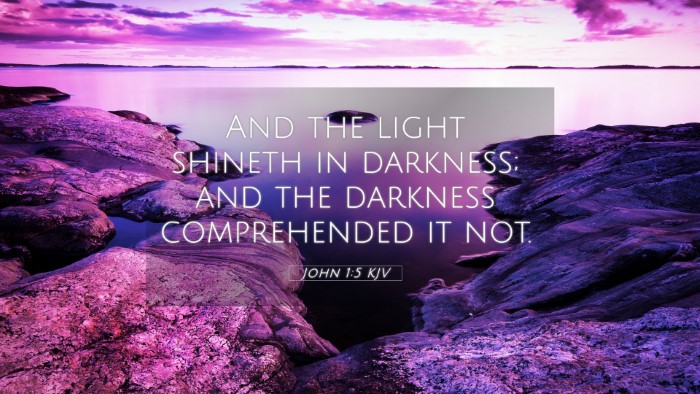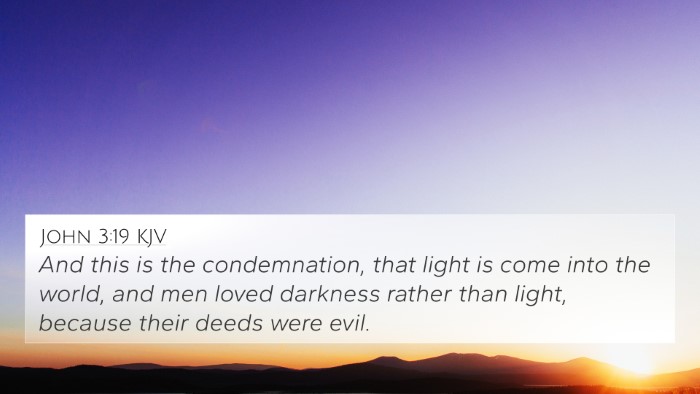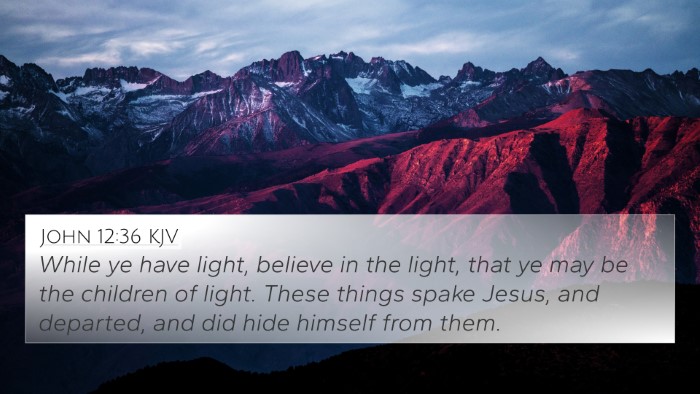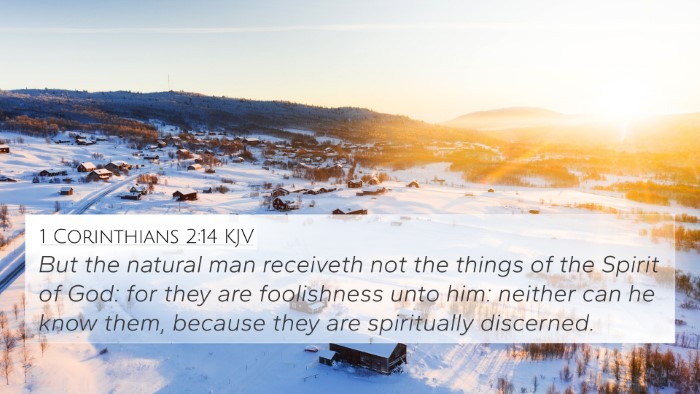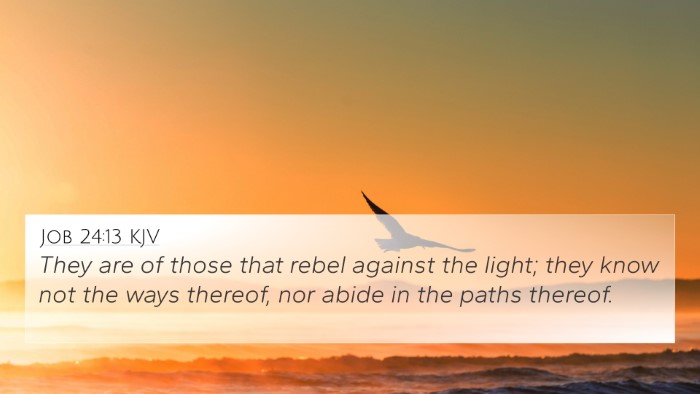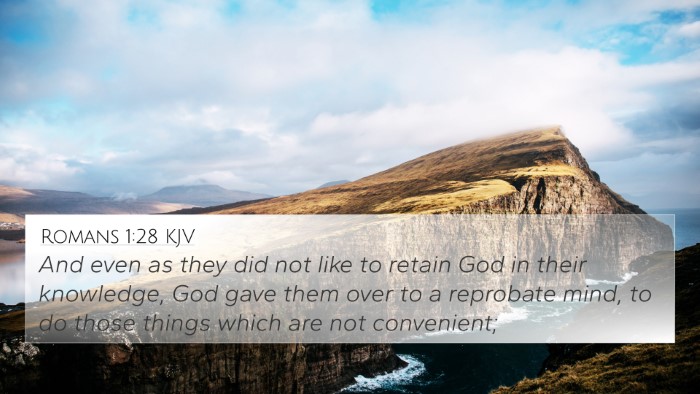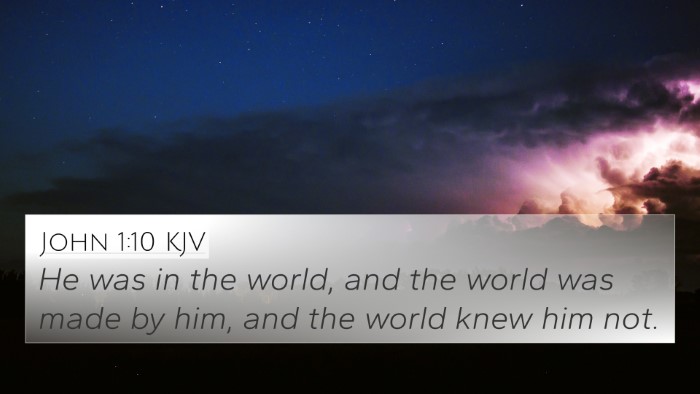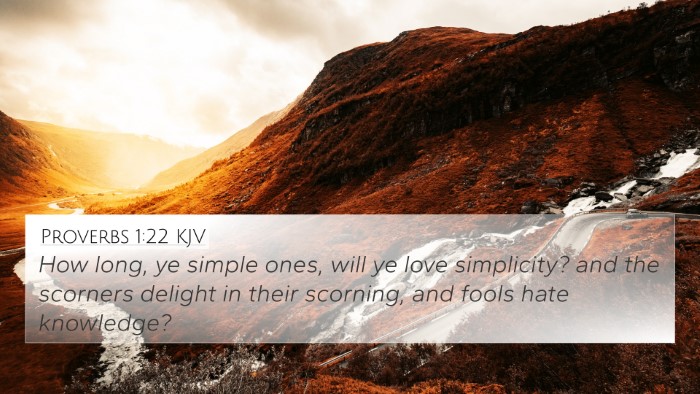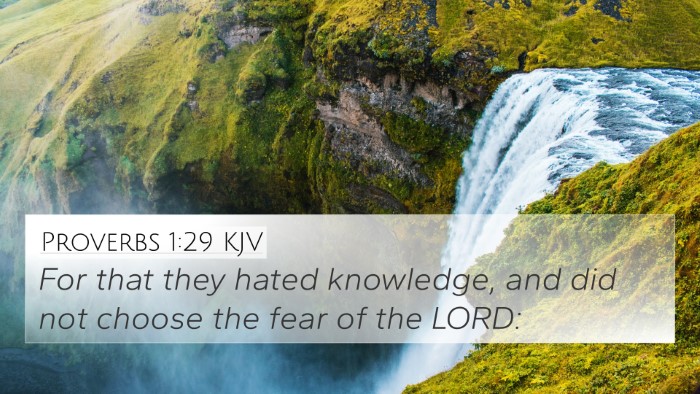Understanding John 1:5
John 1:5 states: "And the light shineth in darkness; and the darkness comprehended it not." This verse encapsulates a profound truth about the nature of Jesus Christ as the light and the world's resistance to that light. Below is a comprehensive analysis of this verse, drawing from notable public domain commentaries.
Verse Meaning and Commentary
The main components of this verse revolve around light and darkness. The light represents Jesus, the embodiment of truth and divine revelation, while darkness symbolizes sin, ignorance, and spiritual blindness.
Insights from Matthew Henry
Matthew Henry describes this light as a metaphor for Christ's presence in the world—a presence that brings spiritual illumination. He emphasizes that while the light shines brightly in the moral and spiritual darkness of the world, the inability of the darkness to comprehend it illustrates humanity's rejection of divine truth. This reflects the broader theme of the Gospel where Christ is continually opposed by the very creations meant to receive Him.
Insights from Albert Barnes
Albert Barnes highlights that the phrase "comprehended it not" signifies more than mere misunderstanding; it implies a lack of acceptance or recognition. The world could not overpower the light, which signifies divine authority—the light continues to shine regardless of the persistent darkness. Barnes notes that this verse lays the groundwork for understanding Christ's mission and the subsequent rejection He faced.
Insights from Adam Clarke
Adam Clarke provides a detailed reflection on the context of light and darkness, emphasizing that this contrast suggests the moral implications of being in the light versus the darkness. Clarke explains that light is not just a guide; it is transformative. The darkness’s inability to comprehend the light indicates humanity's fallen state and need for divine intervention. He further posits that the ongoing struggle between light and darkness serves as a theme throughout the New Testament.
Cross-References to John 1:5
To deepen understanding of John 1:5, consider these cross-references:
- Genesis 1:3: "And God said, Let there be light: and there was light."
- Isaiah 9:2: "The people that walked in darkness have seen a great light."
- John 8:12: "I am the light of the world: he that followeth me shall not walk in darkness, but shall have the light of life."
- 2 Corinthians 4:6: "For God, who commanded the light to shine out of darkness, hath shined in our hearts..."
- Ephesians 5:8: "For ye were sometimes darkness, but now are ye light in the Lord: walk as children of light."
- 1 John 1:5: "This then is the message which we have heard of him, and declare unto you, that God is light, and in him is no darkness at all."
- Revelation 21:23: "And the city had no need of the sun, neither of the moon, to shine in it: for the glory of God did lighten it, and the Lamb is the light thereof."
Connecting Themes Through Cross-Referencing
Connecting Bible verses enhances our understanding of scripture through thematic exploration. Here are some thematic connections linked with John 1:5:
- The theme of light as divine revelation extends throughout scripture, showcasing Christ's role as the ultimate guide for humanity.
- Contrast between light and darkness serves as a motif, highlighting the struggles faced by believers.
- The refusal of the world to acknowledge the light references human sin and the fallen state of society.
Conclusion
John 1:5 serves as a powerful testament to the presence of Christ in a world shrouded in darkness. Understanding this verse through the lenses provided by commentaries from Matthew Henry, Albert Barnes, and Adam Clarke, as well as the outlined cross-references, enables a deeper appreciation of its theological implications. Furthermore, the continued exploration of related themes through cross-referencing demonstrates the interconnectedness of the Biblical narrative and enhances our comprehension of God's transformative light in our lives.

